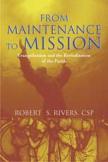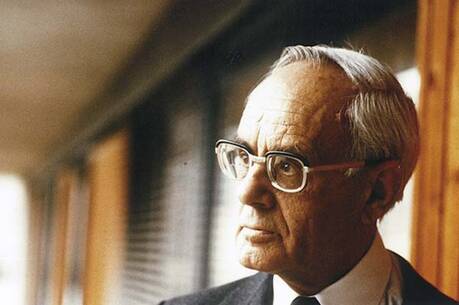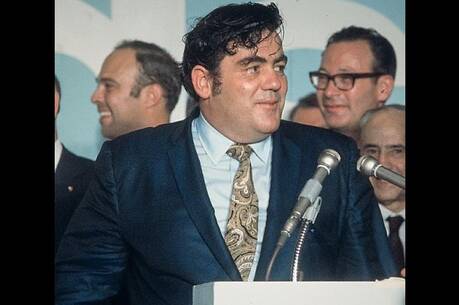Go and Make Disciples
A friend reports the story of a woman, widowed from a Catholic husband with two small children. Honoring her pledge to raise her children as Catholics, she inquired whether she too might become a Catholic. But she was discouraged from pursuing her interest by the indifference of the two priests she approached. This is just one story from my own experience that points to the relevance of this book by Robert Rivers, C.S.P., on evangelization as the center of Catholic parish life.
But as with most books on the nature and operation of the Catholic parish, there is a problem. Parishes, like families, come in all sizes and shapes. They function in diverse social settings and serve all kinds of populations. So generalizations about parish life are usually an awkward fit, especially if one focuses on a single element that is supposed to encompass all the aspects and dimensions of a healthy parish. In From Maintenance to Mission Rivers does exactly this, by proposing that the heart and center of parish life today must be evangelization. Can he pull it off, viewing all the dimensions of parish life through a single lens (evangelization) that nevertheless allows us to take in the diversity of pastoral life in the contemporary church?
He succeeds about as well as anyone could, and in the process he makes some important points that are well worth the attention of every pastoral minister. A pastoral leader who feels overwhelmed by all the conflicting demands of modern parish life could find here the unifying principles that could help him or her pull it all together. More broadly, the writing, if a little ponderous at times, is certainly accessible to any interested layperson, so the book could easily and well serve as a text for discussion in pastoral councils or other parish gatherings.
Father Rivers’s essential argument is that evangelization is “the umbrella under which all ministries are carried out. Everything we do must be seen as evangelization.” The heart of evangelization is “conversion to the Gospel of Jesus Christ.” Only with this comprehensive definition can evangelization assume the role as the essential mission of the church. Rivers is careful to disabuse the reader of false impressions of what he means by evangelization. It is not just the initial proclamation of the Gospel to the nonbeliever, he says, but now includes a “kingdom-centered” approach calling for conversion of people and conversion of the world “to make way for the coming of God’s kingdom.”
The author likes to think in threes. The three influences that have brought him to his convictions about evangelization are his own Paulist background, the reforms of the Second Vatican Couoncil and more recent church documents. Three proclamations are especially important: Evangelii Nuntiandi, the 1974 synod document of Pope Paul VI, which reinterpreted Vatican II as a council on evangelization. In Redemptoris Missio, John Paul II made evangelization a primary agenda for the next millennium. But most of all, it is Go and Make Disciples, the national plan and strategy for Catholic evangelization issued by the U.S. bishops in 1992, that gives structure to From Maintenance to Mission.
Following this teaching, Catholic evangelization has three components or goals touching on “our inner selves, our activities, and our world....” These goals are spiritual renewal, missionary activity and action for justice in the world. Part 2 of the book explicates each of these goals and Part 3 discusses how they can be implemented in the life of the parish, especially when applied to parish leadership and lay collaboration. Finally, Rivers appropriately grounds this pastoral vision in the greatest Trinity of all, beginning with the outreaching love of the Father who sends the Son and the Holy Spirit.
To be effective, Rivers insists, the threefold goals of evangelization must be properly integrated. Doing so makes it possible for evangelization as the essential mission to play a crucial role in planning strategy by providing a focus on the one important thing. And from personal experience Rivers testifies to the subsequent healing that flows from this unifying mission. “There can be a rebirth of effective pastoral leadership, a lessening of turfism, a rise in participation levels, a diminishing of fragmentation, and a heightened sense of ongoing conversion in the parish.”
Rivers provides us with numerous insights that connect his theory with pastoral conditions on the ground. As just one example, he frequently decries the “consumer mentality” that prevails all too commonly in our parishes. This is the mentality that leads parishioners to sit back and wait for the parish staff to deliver the services the church is supposed to provide. Borrowing from African-American spirituality, Rivers says a better approach is for all of us to join together in a common role, seeing ourselves as hosts and the parish as our home. Thus each of us shares in the responsibility of welcoming the stranger, the newcomer, the visitor and the returnee. This example reflects Rivers’s profound estimation of the gifts and responsibility of the laity while properly recognizing the unique charism and role of ordained ministers—a valuable balance that is sometimes in short supply in the life of the church today.
One small quibble: Rivers makes a few disparaging remarks about the “maintenance” function in parish life, though this concept is not as central as its inclusion in the title of the book might suggest. If maintenance refers only to an entirely myopic and self-centered focus in parish life, we can all agree on its negative role. But there is a maintenance function that is essential in a healthy parish in order for the programs and activities to run smoothly and the outreach of the parish to be effective. But this is a minor criticism in the face of the challenging and inspiring elements of parish life that this important book so effectively fosters.
This article also appeared in print, under the headline “Go and Make Disciples,” in the October 31, 2005, issue.








